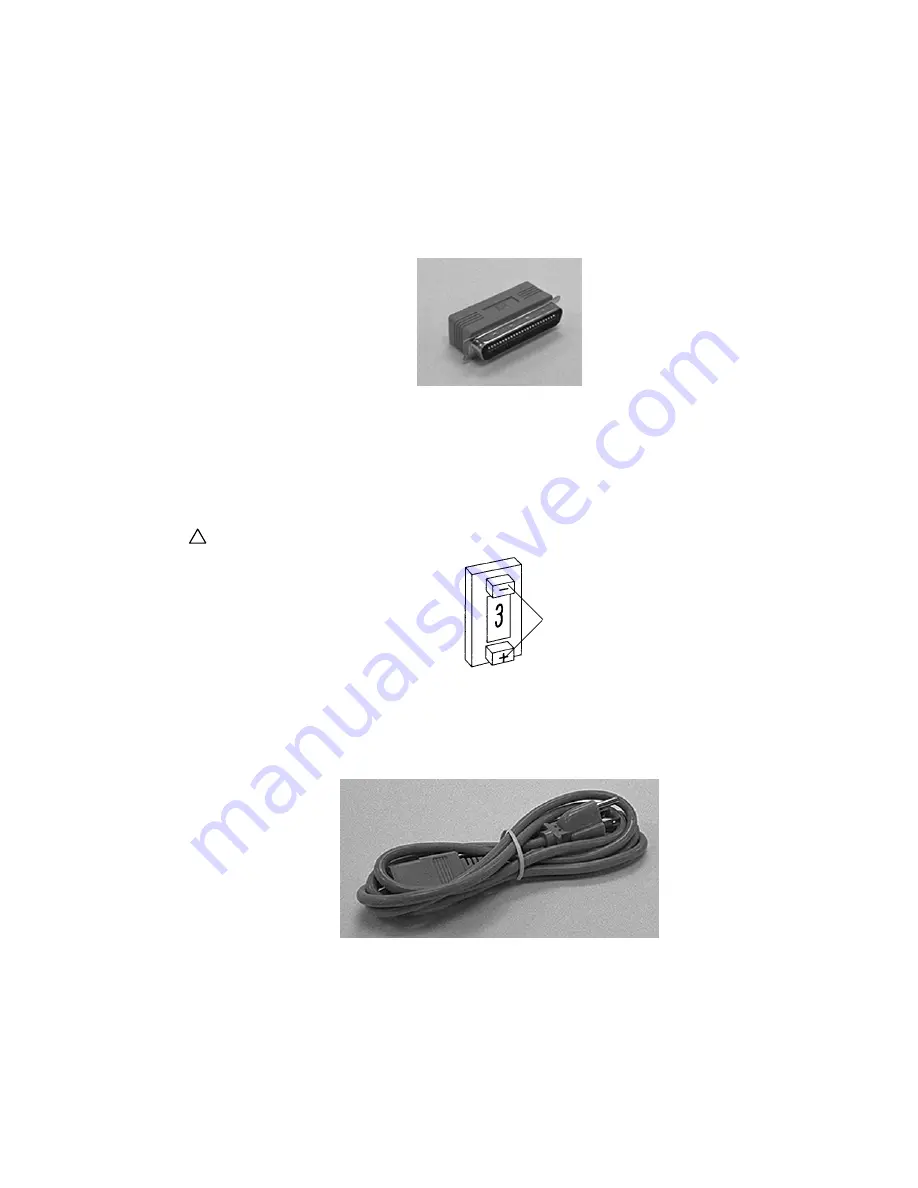
9
5.
If the DataDock is the only device on the SCSI bus, connect the supplied active terminator to the
unused SCSI connector on the rear of the DataDock, otherwise daisy chain the additional SCSI
devices to the DataDock’s open SCSI connector and connect an active terminator to the last device
in the chain.
Terminator (Narrow).
6.
Set the SCSI ID switches on the rear of the DataDock to ID numbers that are not in use by
other SCSI devices on the same bus. The SCSI ID number is changed by pressing the switch’s
push buttons.
In Macintosh systems, ID 0 and 3 are usually assigned to the internal hard disk and CD-ROM drive,
respectively. In IBM PC systems, ID 0 and 1 are usually reserved for boot drives. In both systems, ID 7 is
reserved for the system and cannot be used.
!
Two SCSI devices sharing the same SCSI ID will cause problems to occur.
SCSI ID switch.
7.
Ensure the DataDock’s power switch is in the off position (“0” pressed inwards), then connect the
supplied power cord from the DataDock to a grounded outlet.
The universal power supply in the DataDock automatically adjusts to any input from 90 to 240 volts and
any frequency from 50 to 60 Hz, so no adjustment is necessary.
AC Power cord.
Push button selectors
























